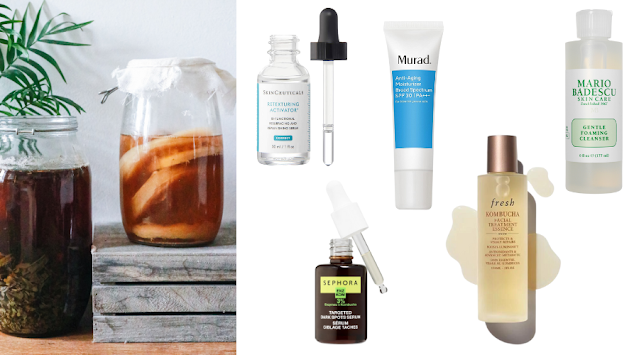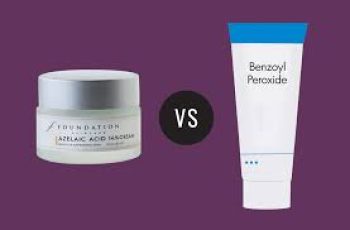When it comes to skincare ingredients, some are so well-regarded that everyone seems to be using them in their daily lives. On the other hand, there are active ingredients that fly under the radar and are well established in the beauty industry but are not yet household names or well-known. The focus of today’s blog post is on two outsiders, azelaic acid and kojic acid. What exactly do these ingredients do for the skin and how can they be used together?
In the next section, we’ll explain the benefits of these ingredients and how to effectively incorporate them into your daily skincare routine.
What is Kojic Acid?
Kojic acid is one of the lesser-known chemical peels in the fruit acid class. It is a byproduct of various mushrooms and fermented foods like soy sauce, rice wine, and sake. It is able to block an amino acid called tyrosine, which is responsible for the production of melanin. This makes kojic acid one of the most effective whitening and bleaching acids. It is great for those suffering from sun damage, age spots, hyperpigmentation, and melasma. You’ll also find that kojic acid has antibacterial properties, making it an effective ingredient for fighting breakouts and acne. Kojic acid is very effective for acne and hyperpigmentation, but you will find that it can cause increased skin irritation, especially if you have dry, sensitive skin.
Due to its high potency, you can find kojic acid in concentrations of 1% or less in a variety of formulas. This high percentage means that this active ingredient can work effectively when applied to the skin (primarily hands and face) occasionally and for short periods of time. Depending on the product formulation will determine how kojic acid is used on the skin. Some formulations, such as soaps, cleansers, and face washes, contain effective amounts of the acid that should be rinsed off the skin immediately. For products that are left on the skin for a long time, you will find that kojic acid has limited effectiveness, as it is poorly absorbed into the lower layers of the skin.
If you would like to learn more about kojic acid, you can learn more about this powerful substance at The Beauty Insiders.
What is Azelaic Acid?
This dicarboxylic acid is often confused with AHAs, but it is extracted from grains such as barley, wheat, and rye. Azelaic acid has antibacterial, antioxidant, and anti-inflammatory properties, making it a highly effective ingredient for fighting acne, uneven skin texture, hyperpigmentation, and more.
Azelaic acid removes the top layer of skin and the accumulation of dead skin cells, dirt, bacteria, and other impurities. All of this can lead to skin imperfections such as blackheads and skin flakes. Signs of premature skin aging increase, and fine lines and wrinkles become more noticeable.
Azelaic acid is known as one of the gentlest acids and can be used effectively by people with sensitive skin. Azelaic acid also has unique properties that make it particularly effective for people with darker skin tones. The powerful acid fights pigmentation spots on black or dark skin without the added risk of sensitivity and irritation.
You can learn more about azelaic acid at The Beauty Insiders, where we have blog posts on its benefits, what it does for your skin, and the best ingredients to use together.
Can you use kojic acid and azelaic acid together?
Yes, but only if you apply them to your skin correctly. Both acids have similar pH levels, with both being more acidic and altering the skin’s natural pH, causing irritation and weakening the skin barrier, which can lead to skin damage. There are a few different ways to use kojic acid and azelaic acid. Here are examples of effective combinations.
Allow about 30 minutes between applications
Waiting this long will allow your skin and pH levels to stabilize and avoid unwanted side effects or irritation. Ideally, I recommend using both products in the evening, as this limits exposure to further free radical damage, such as UV rays, pollution, and bad weather.
Alternate the days you use each acid
By alternating the days you use each acid, you will get the best results without the risk of irritation. Again, I recommend only applying the acids to your skin at night, which ensures you avoid increased itching and irritation.
Use them at different times of the day
Rather than alternating, you can use each acid at different times of the day. Start using azelaic acid in your morning routine, and don’t forget to apply SPF for extra protection. This means the gentler acid can work on your skin throughout the day. You can then use kojic acid in the evening, which is more potent and less likely to cause irritation when exposed to UV radiation.
As with all skincare ingredients, it’s important to make sure your skin benefits from the new ingredients you add to your routine. Therefore, it’s important to consult your doctor or dermatologist before using any new ingredients or formulas.
Is Kojic Acid an AHA?
Yes, it does, although it’s not as well-known as glycolic or lactic acid. Kojic acid works on the surface of the skin to remove accumulated dead skin cells, dirt, and debris. This reveals new, glowing skin, makes the complexion appear radiant and healthy, and strengthens the skin barrier to prevent further damage. It also penetrates the lower dermis to remove excess sebum and bacterial buildup from the pores, helping to maintain skin clarity and overall healthy complexion.
One final property of kojic acid is that it prevents amino acids from overproducing melanin, which can cause signs of melasma and hyperpigmentation to become darker. Kojic acid is a highly effective whitening ingredient, but it can cause increased irritation, especially after chemical exfoliation of the skin’s surface. So, as I’ve already stressed, it’s important to wear SPF every day for extra protection from the sun.
Here’s more information on this lesser-known acid and its benefits for your skin. If you have any more questions, feel free to reach out to us on Instagram.
DQH Knowledge drop: In your 20s, your skin cell turnover decreases. (Cell turnover is a key component in keeping your skin youthful.) You know what else slows down? Your collagen production. Starting in your 20s, collagen decreases by about 1 percent per year. Should you want to prevent fine lines and wrinkles, start by eliminating behaviors that contribute to premature aging. “If it’s bad for you, it’s bad for your skin,” says dermatologist Michel Somenek.
“Cigarette smoking reduces blood flow to the skin and causes premature wrinkling and a dull skin texture. Making the repeated pursed motion to inhale can also cause smoker’s lines. Alcohol and recreational drugs are toxins for the skin that damage its cellular structure and DNA,” Somenek tells us. “The faster you eliminate vices while you are young, the better chance your skin and body have to recuperate.” Also, adopting an anti-aging routine in your 20s is key. After all, the best offense is a good defense. We spoke to Somenek and experts Joshua Ross and Audrey Kunin to find out more.
Keep reading for the best anti-aging products for your 20s, according to skincare professionals.
Sunscreen
“We all know that the sun is the number one cause of skin aging and starting the prevention in your 20s is very important,” Ross says. “The majority of your sun damage won’t start to appear until you’re in your 30s, so don’t wait until you see it surface or you’ll be behind the curve. Stay ahead of it with a good-quality zinc-based sunscreen worn daily.”
Farmacy Green Defense Daily Mineral Sunscreen
An invisible sunscreen with SPF 30, plus botanical extracts meant to protect skin with tons of antioxidants. Bonus: It’s clean and fine to use under makeup.
Bareminerals Complexion Rescue™ Tinted Moisturizer Broad Spectrum SPF 30
Although we recommend you use your SPF and moisturizer separately, we also understand moments when you don’t have time or energy for that extra step. For those times, this bareMinerals moisturizer is a great thing to have on hand.
Vitamin C Serum
“A great introduction to anti-aging is to start with a vitamin C serum in your morning skincare routine,” Ross says. “It’s a powerful antioxidant that will neutralize free radicals and brighten the skin.” He adds that it’s a great way to counteract the effects of the sun’s harmful rays, which, as previously mentioned, are among the biggest causes of premature aging.
Drunk Elephant C-Firma™ Vitamin C Day Serum
The Drunk Elephant C-Firma is a lightweight serum that promises to give skin a glow by combining the brightening powers of vitamin C with ferulic acid, l-ascorbic acid, and vitamin E. The included sodium hyaluronate is meant to replace hydration loss, so you shouldn’t have to deal with any irritation.
Sunday Riley C.E.O. Rapid Flash Brightening Serum
This potent serum is jam-packed with vitamin C (15 percent, to be exact), which means it’s a potential superstar at both brightening skin and dousing it in antioxidants.
Peptides
Using peptides on your skin has many benefits, says Somenek. “The skin barrier is what defends the body against pollution, UV rays, bacteria, and toxins. It can be damaged by several everyday factors. Using topical peptides aids in building a stronger barrier,” he says. “Peptides comprise elastic fibers, which are a type of protein. These fibers help to make skin appear taut and firm. Peptides can also help repair damaged skin, relieve inflammation, and even out skin tone. Some peptides can kill acne-causing bacteria that is common in 20-somethings.”
Kunin agrees, saying, “Peptides are an excellent entry point for supporting collagen.” She recommends looking for face and eye treatments that contain these collagen-boosting powerhouses.
Charlotte Tilbury Magic Eye Rescue Cream
This Charlotte Tilbury super-emollient eye cream has a base of coconut oil and shea butter (read: it’s incredibly hydrating). Botanicals plus peptides are meant to help reduce dark circles and boost collagen, respectively.
This creamy moisturizer serves up potent collagen-boosting peptides and pycnogenol, and antioxidant-rich vitamin C. “Instead of sitting on top of the skin, peptides penetrate the outer layer so they go deep. The ‘signals’ they send tell the cells to produce elastin and collagen, which are needed for youthful-looking skin,” explains Somenek.
At-Home Peel Pads
Remember that skin cell turnover fiasco we talked about earlier? One way to help support it is by exfoliating. “Exfoliation is important to help keep skin fresh and luminous,” Kunin says. She recommends using at-home peel pads as an easy and effective way to exfoliate.
“The goal in your 20s is to fight the slowing pace of cell turnover. It is wise to use products that gently exfoliate, yet still remove oil and other impurities. Products that have Alpha Hydroxy Acids (AHA) or Beta Hydroxy Acids (BHA) are a good choice.”
According to Somenek, you should only exfoliate two to three times a week. “People of all ages are guilty of over-exfoliating and that can be too much of a good thing,” he says.
Dermadoctor Kakadu C Intensive Vitamin C Peel Pad
A few swipes of this Derma Doctor powerful peel pad promise to leave your skin glowing and smooth, thanks to the seven (yes, seven) types of chemical exfoliants, including AHA and BHA. It also contains vitamin C via Kakadu plum extract for added brightening and antioxidant protection.
KEY INGREDIENTS Kakadu plum extract is sourced from the Kakadu plum, a fruit grown in northern Australia. It contains vitamin C, which restores the skin’s natural barrier, increases collagen production, and soothes irritation.
Dr. Dennis Gross Skincare Alpha Beta® Universal Daily Peel Pads
These are the gold standard of peel pads, with a cult following and over 900 five-star reviews on Sephora. They’re easy to use and contain a blend of anti-aging exfoliating acids.
Emollient Night Cream
“In your 20s, you need to start upping the hydration in your skincare routine. You may have been cautious of over-moisturizing because of acne in your teens, but as you enter your 20s, your skin transitions and becomes drier,” Ross says. “I recommend an emollient night cream added into your evening skincare regimen.”
“Twenty-somethings need to make sure that they are not using creams that will clog their pores and cause excess oil production,” says Somenek. Opt for non-comedogenic products.
Cerave Skin Renewing Night Cream
One great choice is the CeraVe Skin Renewing Night Cream, which is a non-comedogenic night cream that leaves skin soft and glowy. It combines the moisturizing powers of ceramides and hyaluronic acid.
RoC Retinol Correxion Max Hydration Creme
“The best night cream ingredients contain retinol, benzoyl peroxide, and/or salicylic acid or hyaluronic acid. The goal is to moisturize, yet remove excess oil,” says Somenek. This Roc Retinol Correxion cream fits the bill as it contains both hyaluronic acid and retinol so it promises to moisturize while also being non-comedogenic.



